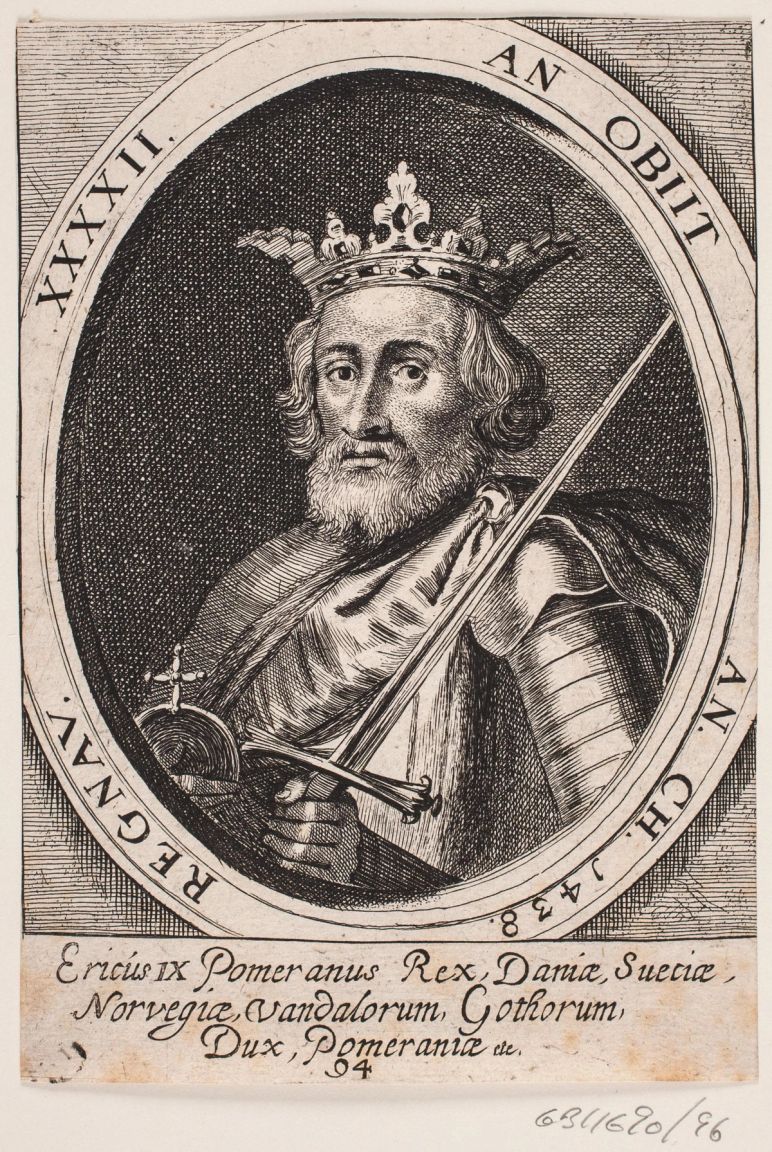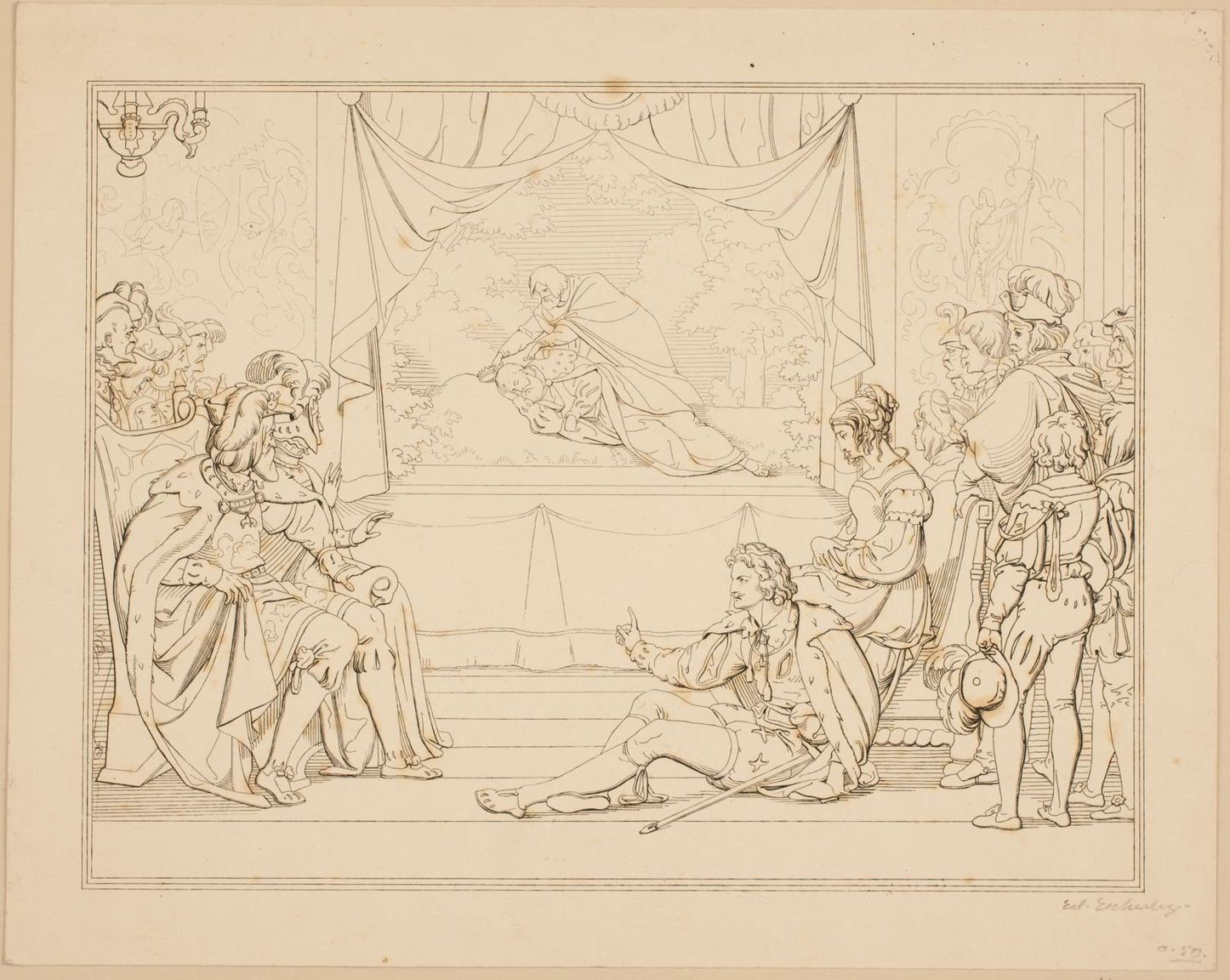- Opført
- Frederik 2. byggede Kronborg i perioden 1574–1585. Slottet skulle være både en stærk fæstning og et passende hjem for den voksende kongefamilie.
- Den store brand
- I 1629 blev slottet ramt af en voldsom brand, som ødelagde det meste af det indvendige slot. Christian 4. genopbyggede sine forældres gamle pragtslot.
- Svensk besættelse
- I 1658 blev Kronborg besat og plyndret af den svenske konge, Karl 10. Gustav, under en af de mange krige mellem Danmark og Sverige. Først i 1660 blev slottet leveret tilbage til Danmark efter pres fra europæiske stormagter.
I mere end 400 år har Kronborg været et symbol på tidligere tiders magt og rigdom. Her har danske konger holdt vilde fester, opkrævet told og kæmpet mod rigets fjender. En arkitektonisk perle placeret lige ved indgangen til Østersøen.
Kronborg gennem tiden
Krogen
Tiden før Kronborg
Allerede i begyndelsen af det 15. århundrede byggede Erik af Pommern fæstningen Krogen - fundamentet for det, der senere skulle blive Kronborg. Krogen sikrede dansk kontrol over sundet og Østersøen under Kalmarunionen. Danmark betragtede sundet som indre farvande og kunne kontrollere både told og udenlandsk adgang gennem Krogen.

Erik af Pommern. Illustration af Albert Haelwegh, 1646.
Tolden fra Øresund

Kongens pengemaskine
I over 400 år – fra 1400-tallet til 1857 – blev der opkrævet Øresundstold ved Kronborg. Med slottets kanoner rettet mod skibene havde de søfarende intet andet valg end at betale. Toldindtægterne gik direkte i kongens kasse og finansierede både slottet og andre kongelige projekter.

At bygge et mesterværk
Hvide mure og gyldne tårne
Frederik 2. lod Krogens efterhånden faldefærdige fæstning erstatte af et helt nyt og imponerende renæssanceslot efter alle kunstens regler, bastioner og kasematter. Først blev slottet opført i rødsten med sandstensfriser, men Frederik 2. ombestemte sig midt i processen og beordrede, at man i stedet lod facaden omslutte af hvide sandsten fra Skåne og Gotland - noget af det dyreste materiale, man kunne opdrive - samt rødlige kobbertage og gyldne spir. På den måde adskilte Kronborg sig markant fra de adelige godser med rødsten, der lå rundt omkring i landet, og han fik her markeret forskellen mellem konge og adel.

Hamlet flytter ind

Erling Eckersberg Scene fra Hamlet. 3. akt
Shakespeares Slot
Historierne om Kronborgs pragt, de vilde fester, der blev holdt her, og royale eskapader nåede hele vejen til London og til William Shakespeare, der lod sig inspirere og valgte slottet som kulisse for sit berømte drama "Hamlet", hvor Kronborg blev til Elsinore Castle.
Hvem er ham der Hamlet? 
Erling Eckersberg Scene fra Hamlet. 3. akt
Kronborg i dag
Et slot i verdensklasse
I dag står Kronborg som et af Europas bedst bevarede renæssanceslotte. I år 2000 blev det optaget på UNESCO’s verdensarvsliste – en anerkendelse af dets unikke arkitektur, historiske betydning og kulturelle værdi. Restaureringer sker stadig med respekt for de oprindelige metoder fra 1500-tallet.

HØR OM BRANDEN PÅ KRONBORG I 1629
Seniorforsker, museumsinspektør og bronzealderekspert ved Nationalmuseet, Poul Grinder-Hansen, fortæller her om branden på Kronborg i 1629.
Oplev historien med hele kroppen







